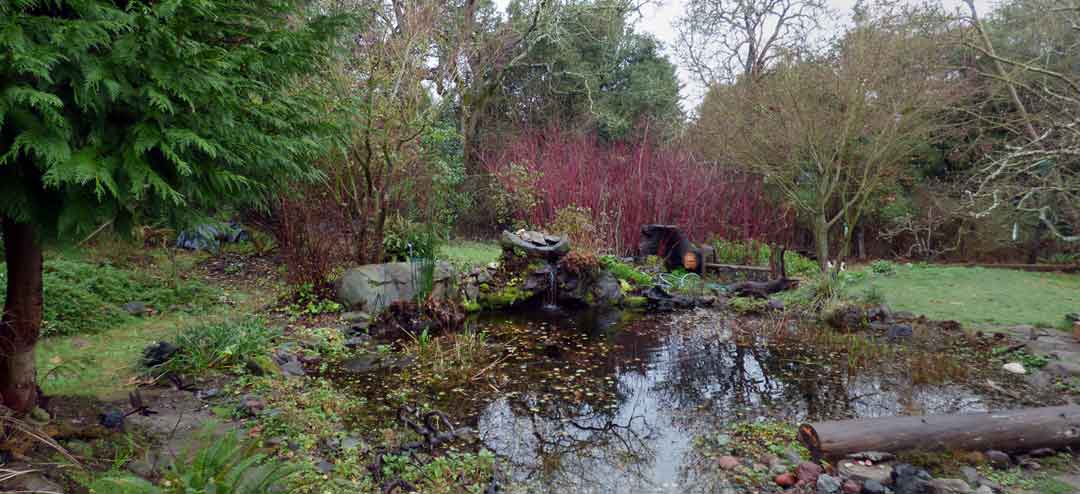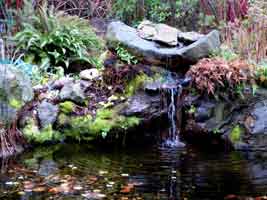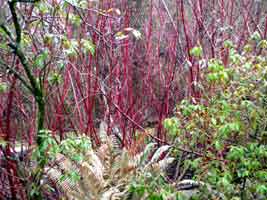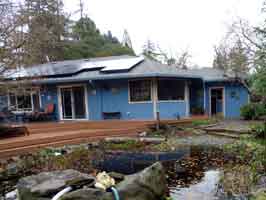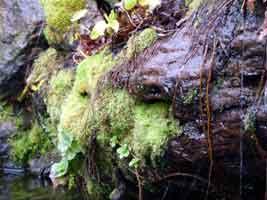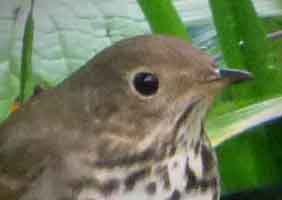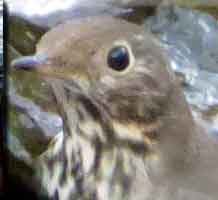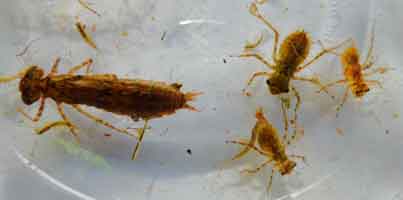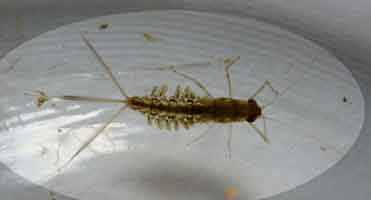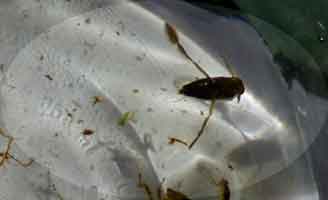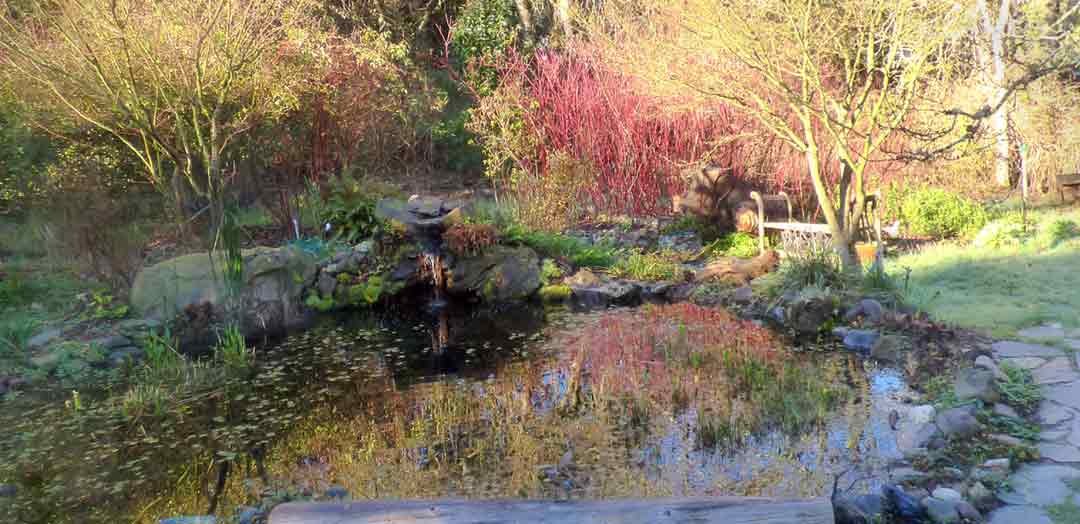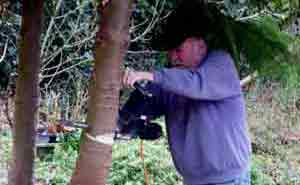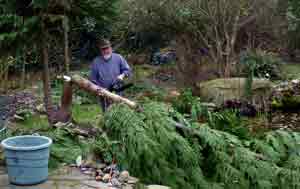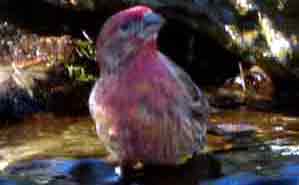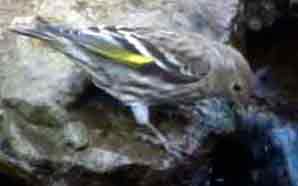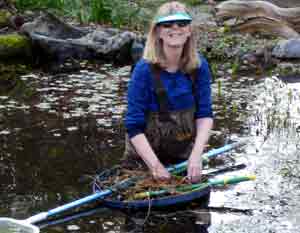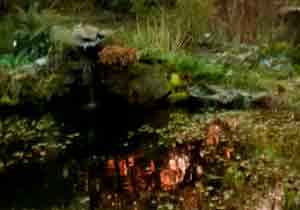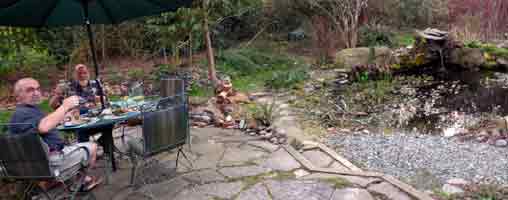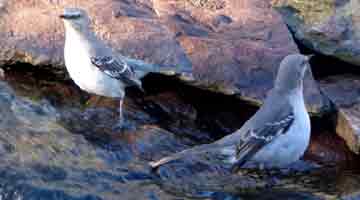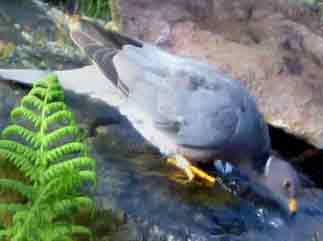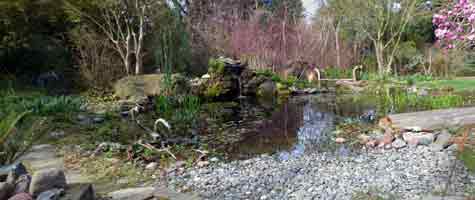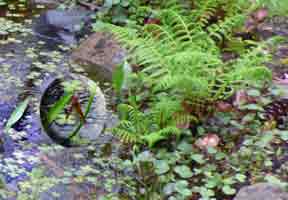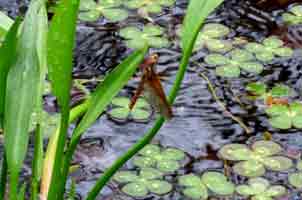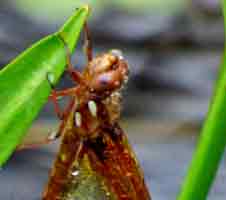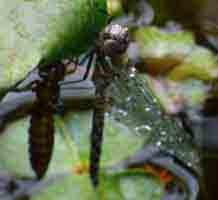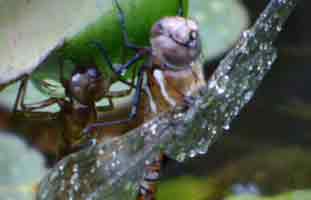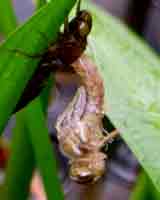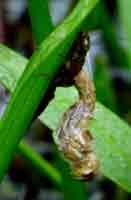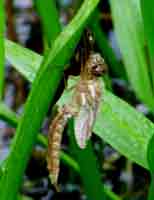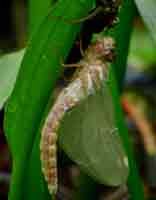(click any image to see it expanded and/or enlarged)
March starts in winter and ends in Spring. Yay!
Spring sprang forth already in full force with nary a freeze to slow her down!
In fact, it's hard to believe, but I found a newly emerged Cardinal Meadowhawk and a newly emerged damselfly soaking up the rays on our chaise lounge!!
Here a female Cardinal Meadowhawk seems to be watching them!
The frogs were singing in the pond every night (sometimes I had to sleep with a pillow over my head!), but they rested during the day. I caught this one on the back
of a Blue-flag Iris leaf.
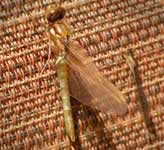
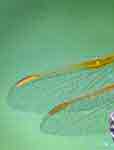

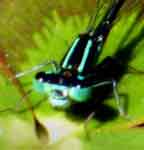
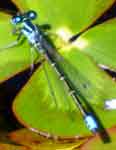
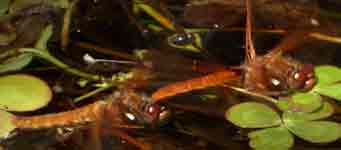
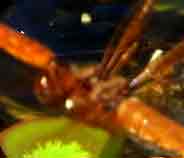
Soon I found a male Western Forktail damselfly holding a territory on the Water Clover. That seemed to solve the mystery of 'who' the newly emerged damselfly was! Ischnura perparva is
a common species in most of California, and identified by the two blue stripes atop his thorax.
We love finding the Dragonflies breeding in the pond. The images show how the male courts the female - he grabs her by the eyeballs!! The 2nd image shows the hold.
Luckily, if he's the right species, this feels good to her - because it's up to the female dragonfly whether they will mate or not.
April:
(click any image to see it expanded and/or enlarged)
LOOK who showed up for April Fool's day!! NO FOOLIN'!! This is the 2nd time this pair of Mallards has showed up on April 1st!!
Click on the image to be taken to the Spring 2016 images.
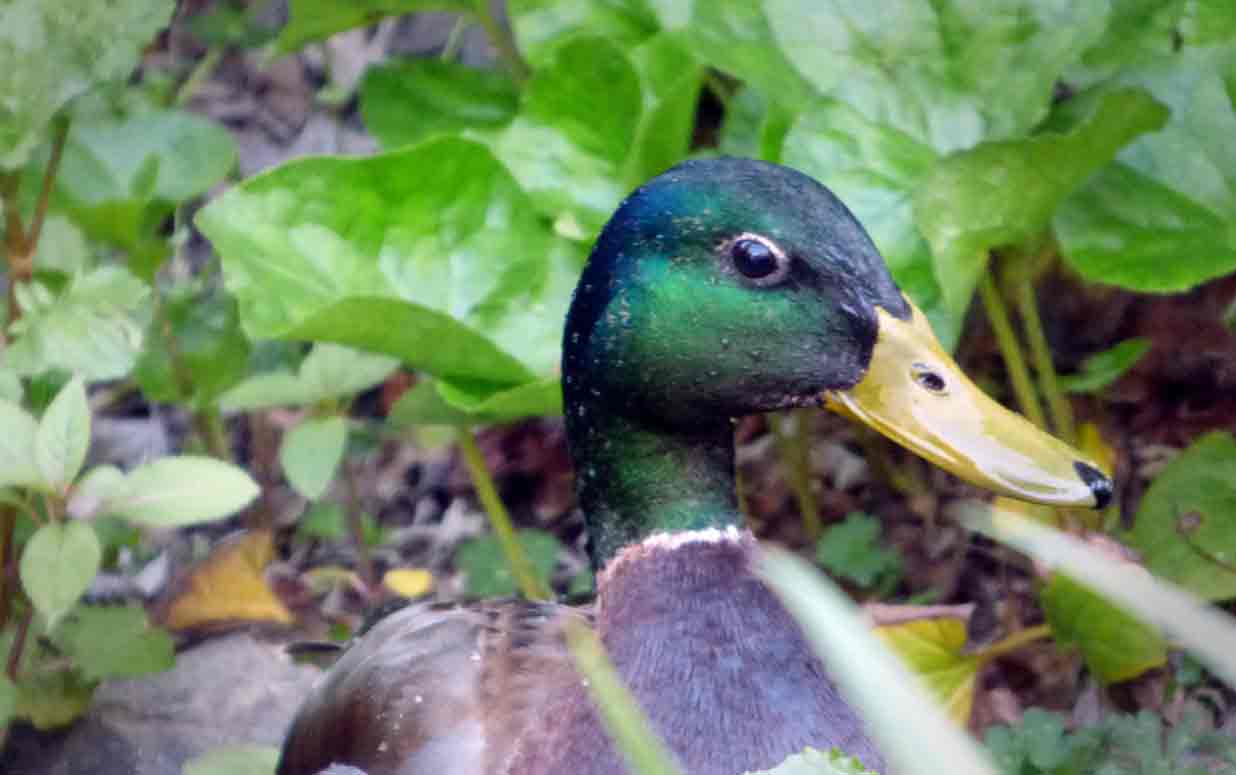
Click on the image to be taken to the Spring 2016 images.
